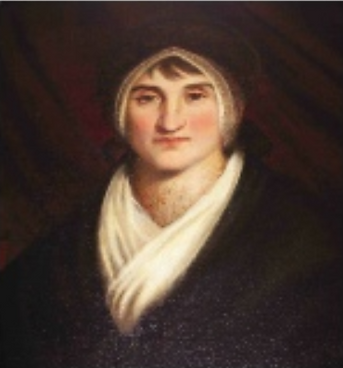Atlanta Burns Club Visit 2009
Atlanta Burns Club Visit 2009
Atlanta Burns Club Visit 2009
Atlanta Burns Club Visit 2009
Atlanta Burns Club Visit 2009
Atlanta Burns Club Visit 2009
Atlanta Burns Club Visit 2009
Atlanta Burns Club Visit 2009

The Visit of Robert Burns to Inverness
The Inverness Connection with Robert Burns
In a letter of 7th February 1787 to David Erskine, Earl of Buchan, Burns stated his wish to travel around Scotland: “Your Lordship touches the darling chord of my heart when you advise me to fire my Muse at Scottish story and Scottish scenes. I wish for nothing more than to make a leisurely Pilgrimage through my native country; to sit and muse on those once hard-contended fields where Caledonia, rejoicing, saw her bloody lion borne through broken ranks to victory and fame; and catching the inspiration, to pour the deathless Names in Song.” Later that year Burns expressed similar sentiments in letters to Alexander Patison, a Paisley textile manufacturer (17th May) and to Mrs Frances Anna Dunlop of Dunlop (22nd March) when he described his tour of the Borders and North of England as “a slight pilgrimage to the classic scenes of this country”. Burns’ Tour of the Highlands and North-East of Scotland in August and September 1787, in the company of William Nicol, was made in a post-chaise with coachman (probably out of consideration for the age of his travelling companion who was 15 years older), lasted 23 days and covered some 600 miles – hardly a ‘slight pilgrimage’!

A Post-Chaise such as Burns would have used

Dulsie Bridge.
John Claude Nattes [Public domain], via Wikimedia

Elizabeth Rose 19th of Kilravock.
Photo courtesy of
Kilravock Castle Christian Trust
The following day (Wednesday 5th September) the poet’s journal records the next stage of the tour: Loch Ness – Braes of Ness General’s hut – Falls of Foyers. Urquhart Castle and Strath – Dine at Kilravock – Sup at Mr Inglis’s – Mr Inglis and Mrs Inglis : three young ladies. Burns and Nicol spent that night in Inverness in the Horns or Ettles Hotel. On Thursday 6th September the journal continues: Come over Culloden Muir reflections on the field of battle breakfast at Kilraik [Kilravock Castle] – old Mrs Rose. sterling sense warm heart strong passion & honest pride all in an uncommon degree Mrs Rose Junr a little milder than the Mother. this perhaps owing to her being younger Mr Grant, minister at Calder [Cawdor] resembles Mr Scott at Inverleithing [sic-read Innerleithen] Mrs R and M. Grant accompany us to Kildrummie [a house near Nairn owned by the Rose family] – two young ladies, Miss Ross who sung two Gallic songs. beautiful and lovely – Miss Sophie Brodie not very beautiful, but most agreeable and amiable – both of them the gentlest mildest sweetest creatures on earth and happiness be with them dine at Nairn Fall in with a pleasant enough gentleman, Dr Stewart, who had long been abroad with his father in the forty five and Mr Falconer, a spare, irascible warm-hearted norland, and a non-juror – wastes of sand. Brodie House to lie [i.e. sleep]. Mr Brodie truly polite, but not just the Highland cordiality.
So ended Burns’ visit to Inverness and the Highlands but the Highland tour bore fruit in many of Burns’s poems and songs.
He wrote A Highland Welcome on 2nd September when he and Nicol were coming up the Garry to Dalnacardoch and Dalwhinnie:
When Death’s dark stream I ferry o’er
(A time that surely shall come),
In Heaven itself I’ll ask no more,
Than just a Highland welcome.
On 5th September Burns wrote Lines on the Falls of Fyers (Foyers) which he had just visited:
AMONG the heathy hills and ragged woods
The roaring Fyers pours his mossy floods;

Falls of Foyers.
Falls of Foyers David Johhnston Wiki Commons
His song The Lovely Lass o’ Inverness, believed to date from the last three years of his life, alludes to the Battle of Culloden fought in 1746 on Drummossie Moor near Inverness which he had visited on 6th September:
‘Drummossie moor, Drummossie day –
A waefu day it was to me!
For there I lost my father dear,
My father dear and brethren three.
The ‘raucle carlin’ in The Jolly Beggars sings of her love for her gallant, braw John Highlandman with ‘his philibeg an’ tartan plaid/An’ guid claymore down by his side’.
James A Mackay’s Burns A – Z The Complete Wordfinder lists many references to ‘Highland’, ‘Highlan’, ‘Highlandman’ and ‘Highlands’ in Burns’ poems and songs (pages 298-299).
But the story does not end there…..

Photo courtesy of The National Trust for Scotland
Burns was armed with letters of introduction to Highland lairds and gentry from two Edinburgh acquaintances with Highland connections - Henry MacKenzie, the author ofThe Man of Feeling, a book Burns said that he prized “next to the Bible”, a provost of Nairn as well as a cousin of Mrs Elizabeth Rose of Kilravock) and his fellow Crochallan Fencible, William Dunbar (one of the Dunbars of Boath from near Nairn).
After leaving Edinburgh and making stops at Blair Castle and Grantown, the poet and Nicol finally arrived in Inverness on Tuesday 4th September after spending the previous night in the King’s House (now a farm house) at Dulsie Bridge near Nairn and making detours to both Cawdor and Kilravock Castles and to Fort George. Burns was meant to meet that evening with Inverness Bailie (later Provost) William Inglis at the latter’s home at Kingsmills House but postponed the meeting with a respectful note of apology saying that he was “jaded to death with the fatigue of to-day’s journey – won’t leave Inverness till Thursday morning.”

William Inglis
Photo courtesy of Am Baile/Highland Libraries
